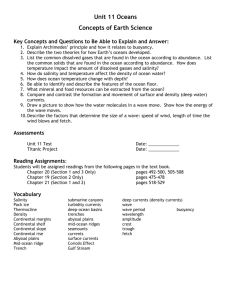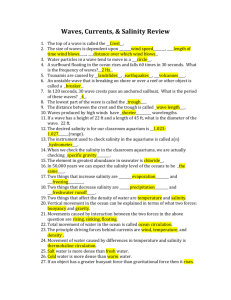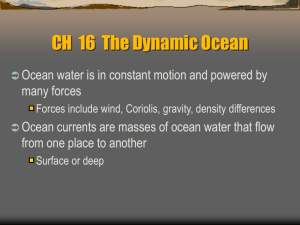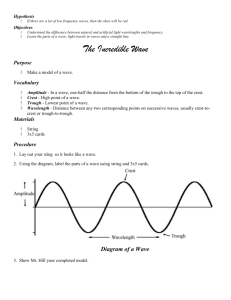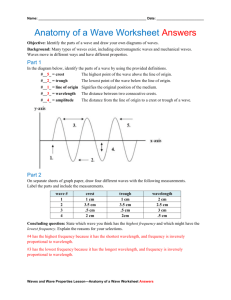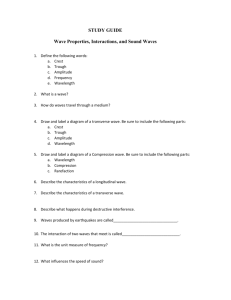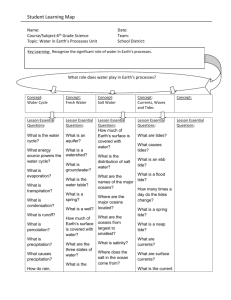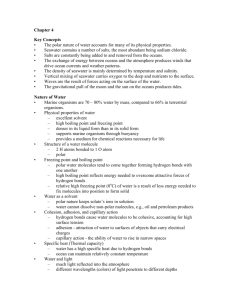wave height
advertisement
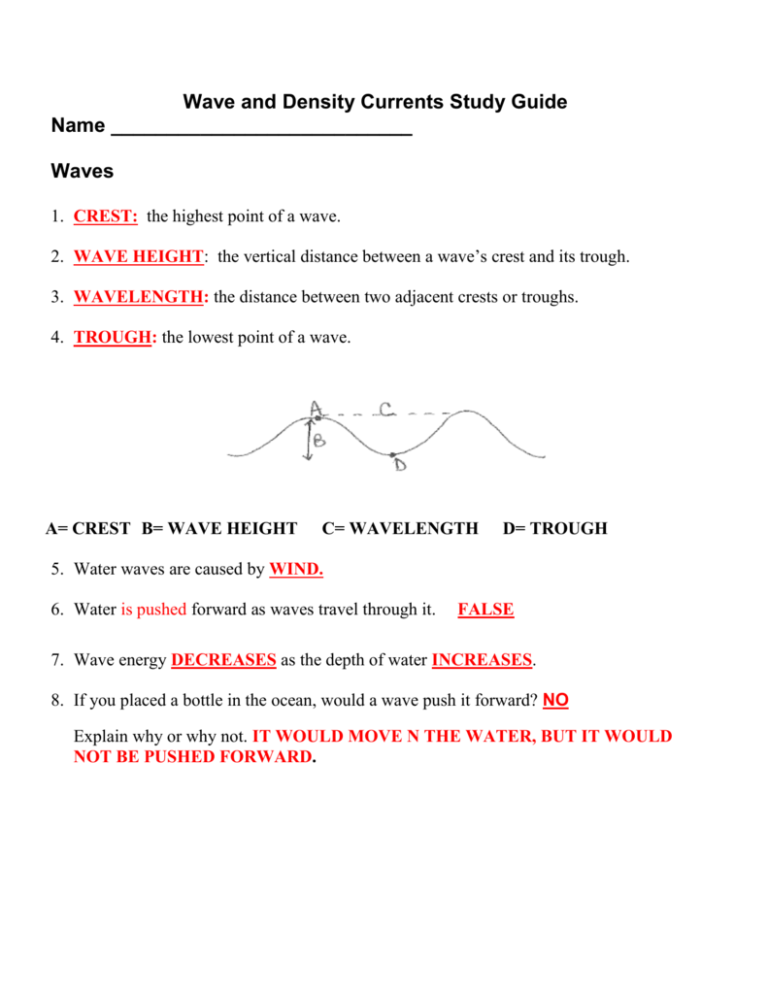
Wave and Density Currents Study Guide Name ___________________________ Waves 1. CREST: the highest point of a wave. 2. WAVE HEIGHT: the vertical distance between a wave’s crest and its trough. 3. WAVELENGTH: the distance between two adjacent crests or troughs. 4. TROUGH: the lowest point of a wave. A= CREST B= WAVE HEIGHT C= WAVELENGTH D= TROUGH 5. Water waves are caused by WIND. 6. Water is pushed forward as waves travel through it. FALSE 7. Wave energy DECREASES as the depth of water INCREASES. 8. If you placed a bottle in the ocean, would a wave push it forward? NO Explain why or why not. IT WOULD MOVE N THE WATER, BUT IT WOULD NOT BE PUSHED FORWARD. 9. Define Salinity: A measure of the amount of salts dissolved in seawater. 10.The density of seawater increases if salinity increases. 11.Density also increases as temperature decreases. 12.Cold water has a higher density 13.warm water has a lower density 14.Density currents flow through the ocean very slowly. 15.What causes surface currents? WIND 16.What causes deep-water (density) currents? LOW TEMPERATURE AND HIGH SALINITY 17.What causes surface currents to curve right (clockwise) or left (counter clockwise) rather than travel in a straight line? The CORIOLIS EFFECT 18.What surface current affect the climate of Georgia and the United Kingdom? The GULF STREAM Note Density currents form when a mass of seawater becomes denser than the surrounding water. Gravity causes more dense seawater to sink beneath less dense water. The density of seawater increases as salinity increases. Changes in temperature and salinity work together to create density currents.
